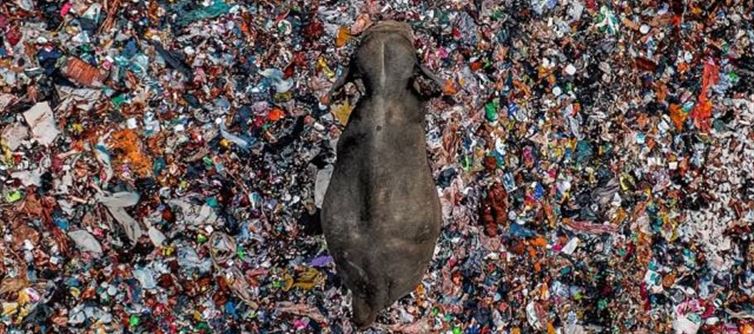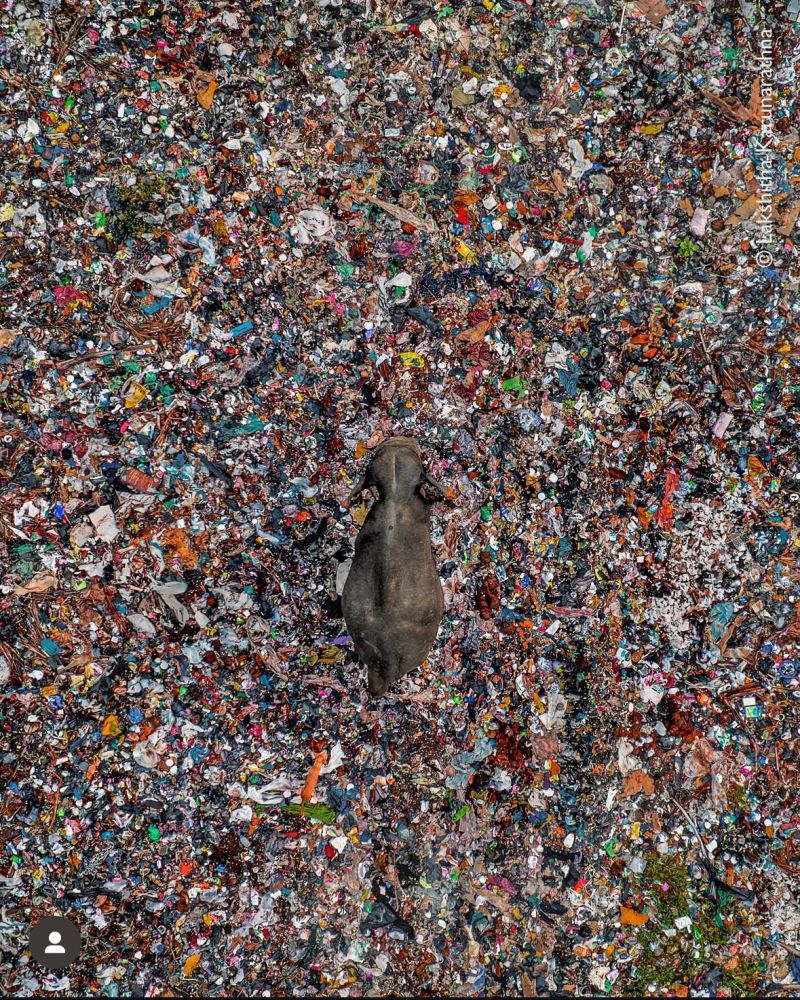
Toxic Tip—that’s the haunting title of the award-winning photograph at the 2025 Environmental Photography Awards, and it could not have been more apt. Shot by Lakshitha Karunarathna in Eastern Sri Lanka, the frame freezes an unthinkable reality: a wild elephant foraging through a sprawling waste dump, searching not for tender shoots or fruits of the forest, but for scraps wrapped in polythene.
Forests turned to landfills. Food replaced with plastic. Toxic Tip isn’t just an award-winning photo—it’s a warning of how humanity is failing its giants.
The image takes a few seconds to truly sink in. This is no isolated case. For years, open landfills have been encroaching upon forest edges and elephant corridors in Sri Lanka. With their habitats shrinking, herds often wander into these dumps—easy buffets of human waste that, tragically, come laced with plastic and toxins. The consequences are devastating. Over 20 elephants have died at this single dump in just the past eight years, their massive stomachs clogged with polythene, microplastics, and indigestible packaging.
This isn’t merely Sri Lanka’s crisis—it’s a global mirror. Plastic pollution, unchecked landfills, poor waste segregation, and a relentlessly growing human footprint have turned once-sacred habitats into toxic traps. Elephants, revered as symbols of wisdom and guardians of ecosystems, are reduced to scavengers, victims of our consumption and negligence.
Karunarathna’s lens captures more than an elephant in distress—it captures humanity’s betrayal of nature. His words frame it best: this is a “call to conscience.”
If the world cannot halt its addiction to disposable plastic, reform waste management, and protect dwindling habitats, the future of elephants—and countless other species—will be written in landfills, not in forests.
The award is not just for a photo. It is for the truth it forces us to face.




 click and follow Indiaherald WhatsApp channel
click and follow Indiaherald WhatsApp channel